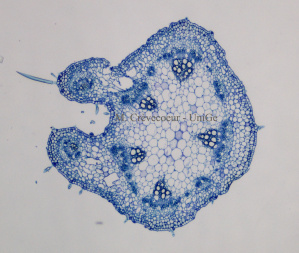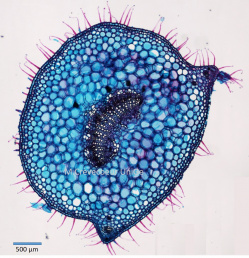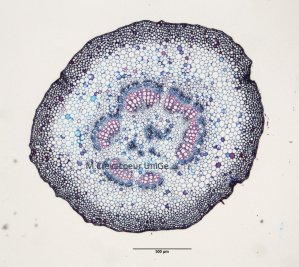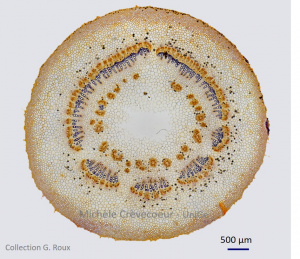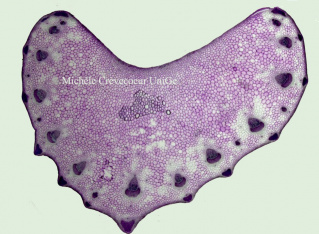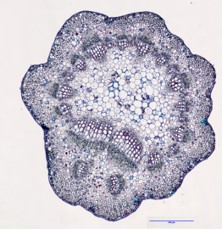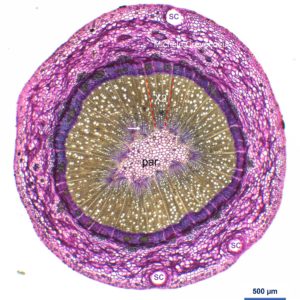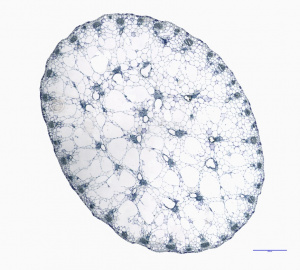Cross section in petioles of various plants
Bean, nettle, tobacco, ficus, apium, grape, xanthosoma.
In many dicotyledons and in some monocotyledons, the leaf is borne on a petiole, generally at a node level and its length varies according to the plant. The two main roles of the petiole are mechanical support (resistance to the wind) and orientation of the blade or lamina to allow tracking of sun light. It also enables the lamina to twist and partly rotate in the wind. Many leaves lack petioles, and they are termed “sessile” meaning that the blade is directly seated on the stem. In some monocots the base of the leaf is expanded out into a sheath, which wraps around the stem.
The section of a petiole is frequently circular or semicircular but there is a great variability in the form of this organ that can also be flat, triangular. Petioles in some plants have alimentary uses such as rhubarb, celery.
In a petiole we find the same tissues as stems. The protective tissue in contact with environment consists in a uniseriate epidermis with cuticle, stomata and often trichomes. Below the epidermis we find the ground tissue, parenchyma, that commonly contains layers of support tissues, most generally collenchyma. The center of petiole is occupied by parenchyma. The vascular bundles show a variety of arrangements and of size and are in continuity with those in midrib of the lamina and in internode. They are often disposed on a ring sometimes on two rings. Xylem is oriented towards the center and phloem towards the outside.
The sections in petioles shown on this page have been made, stained, and photographed in the histology and cytology unit – Plant Biology Department – Geneva University. One exception : the section in a petiole of common Ficus comes from the Georges Roux collection.
